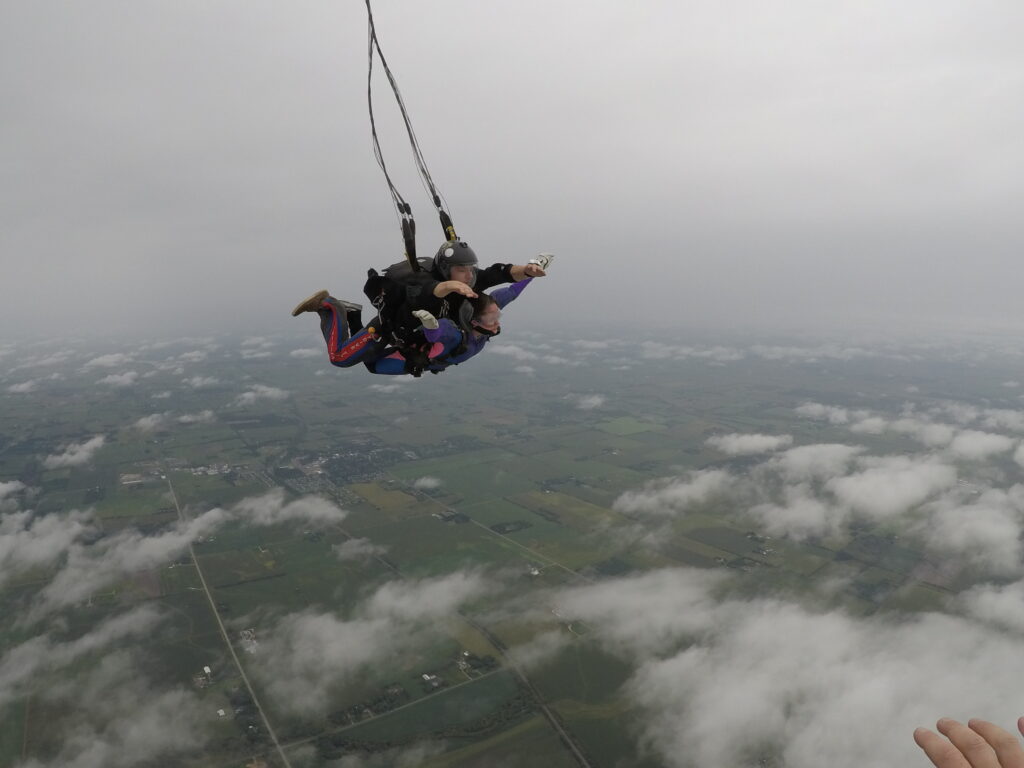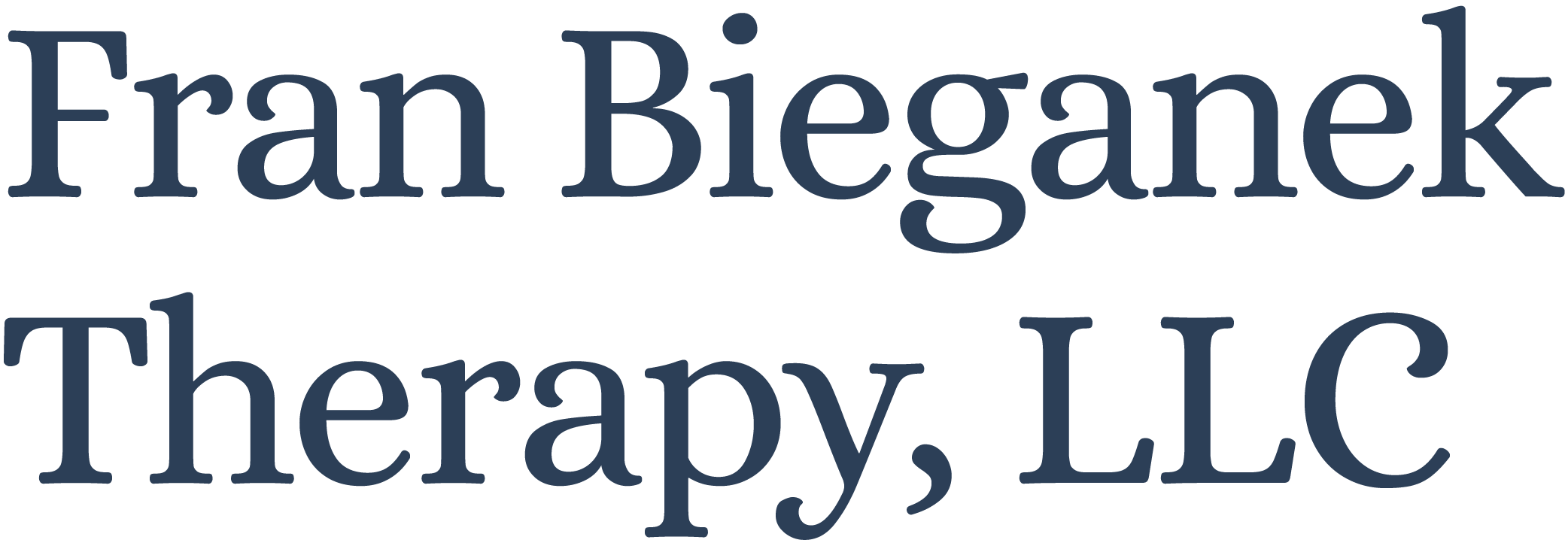Can Letting Go Really Feel This Good?!
By Fran Bieganek, MS, LP

Since the age of 10 I have wanted to skydive, to know what it’s like to free fall through the air. I never followed through, though. I grew up became a mom, developed a career and became a grandma, and so on and so on. And, I developed lots of stories about why skydiving wasn’t a good choice. But, about 3 weeks ago I finally did it! I climbed in the cabin of a plane, along with my daughter-in-law and son-in-law and our instructors and videographers and then watched as those family members fell into the sky before me. And, then, attached to my tandem instructor, I jumped out of the plane, free-falling at 120 mph until the parachute was deployed! It was both exhilarating and peaceful! And, it was an ultimate experience of letting go – I was not in control, at all!; I had to let my family members just tumble into the sky and fall toward the earth and I had to trust in a complete stranger to get me down to safety. And, maybe most importantly, I had to trust that no matter what happened, I mean no matter what!, I would be OK. When I jumped I felt pure joy!
I have an admission to make: I have a well-developed pattern of grasping for control in my life. It presents in the form of a well-developed life management system. From the outside it can look like I’m cool as a cucumber, just going with the flow, have it all together. But, the truth is that, historically, I have been pretty calculated in my approach to both my internal and external environment. This calculation has been rooted in a fear story.
My early life circumstances set me up to have a well-honed hyper-vigilant streak, one that would allow me to control my environment for safety purposes. This served me well in some ways – I became very self-disciplined, which afforded me many successes in my career, as a parent, as a friend, even in self-care to some extent. But, it also held me hostage – unable to truly trust and let go. I have spent many years working to loosen this pattern. And, I have experienced much progress in this area thanks to guidance and support from wise, compassionate and consistent mentors, family and friends. They have helped me to face uncertainty and, at the same time, to change the story about uncertainty that fed my fear. My sky dive was a result of this growth.
The fear story is simple, black and white; it goes like this: the way to stay safe is to be in control at all times – period. I know I’m not alone in this story. I know that many of you have your own version of it that has been a road map for how you are in the world. This story of control seems to permeate our human condition. It has some truth in it, but its dichotomous dictate – all control or no safety – is misguided, misleading and makes it impossible to experience a truer life. I have experienced this within myself and I have seen it in countless clients with whom I have sat as they experienced the distress of their own fear stories. So much research has been done on the impact of fear. And, this research has resulted in a diverse set of recommended strategies/techniques to manage fear. As diverse as these strategies are, there is one common denominator between them: What we know about fear is that if you avoid it, it grows more ominous; if you approach it, it loses its intensity and power. My hope in sharing my experience with you is to encourage you to start, or continue, to challenge your story, to risk living on your terms, rather than the terms your fear story dictates, demands.
For some of you that may mean jumping out of a plane at some point, but for some that won’t be on the list. It doesn’t matter what your list is comprised of as long as you have a list of “letting-go” work that you are actively engaged with. What I have learned from my journey and from the journeys many people have shared with me in my clinical practice is a clear process: acknowledge the story of your fear, identify ways to challenge the story that equates control with safety and then enact those strategies over and over again as you peel away the layers of the story that are embedded in your psyche.
And, so, I have a simple, but profound invitation for you: Practice the pure joy in Letting-Go, over and over and over again.
Examples of potential ways of “Letting Go”:
- Have truthful conversations
- Do an activity you have wanted to (that is in service to your well-being), but have previously decided you shouldn’t do because its end result isn’t certain
- Stop doing something (that’s not in service to your well-being) even though the end result of stopping isn’t certain
- Face a painful emotion (fear, anger, sadness, loneliness)
- Let yourself experience a positive emotion (happiness, joy, love)
- Ask for a raise, a promotion or some other work benefit
- Show your true self
- Put one foot in front of the other
- Say no if that’s what you truly want to say
- Say yes if that’s what you really want to say
- [Add your own ways of letting go to this list!]
Most often this practice works best if you have a mentor, counselor or other support person to guide and support you in your work. Consider reaching out for one! Give yourself the chance to experience the pure joy of Letting Go!

Fran Bieganek is a Licensed Psychologist practicing holistic psychotherapy and neurofeedback at Bhakti Wellness Center. She has been practicing for over 20 years and currently specializes in the areas of trauma, anxiety, depression, grief and loss, stress management, developmental transitions and wellbeing. She works with both individuals and couples. In addition to her therapy practice she has also taught Psychology courses at several colleges in Minnesota. She is currently accepting new clients and can be reached at 612-564-9947 or by emailing her at: [email protected]

Recent Comments